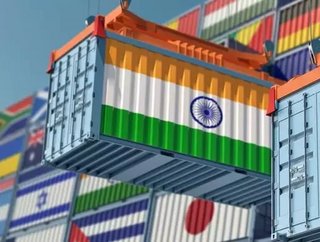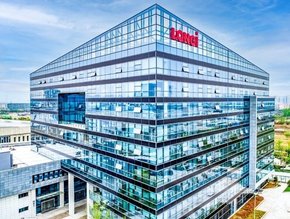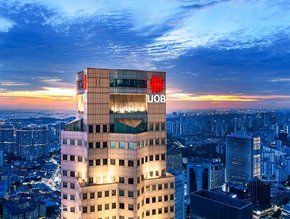Frost & Sullivan: Realising supply chain potential in India

When it comes to the performance of the logistics industry in India in 2021, research by Frost & Sullivan has identified a number of challenges, both global and local.
On the global front, there are the challenges caused by the pandemic, including a pared-back workforce and limited port operations, as well as a stagnant global economy, trade disputes, geopolitical uncertainties and environmental regulations.
On a more local level, say Frost & Sullivan, the Indian supply chain and logistics industry lags compared to its global counterparts due to areas such as lack of supporting infrastructure, automated material handling systems, and high manual process infrastructure.
With such challenges and issues in mind, Frost & Sullivan has identified four growth opportunities for Indian supply chain and logistics in 2021.
1. Acceleration of Digital Supply Chain Services
As customers demand real-time visibility, service providers are implementing digital supply chain solutions to ensure a quicker real-time response.
Technological advancements like AI, Machine Learning, the IoT, and Data Analytics will revolutionise logistics process automation, order processing, supply chain visibility, and last-mile delivery solutions. Digital platforms and online freight services are expected to improve logistics efficiency by optimising the use of resources.
The emergence of online freight services will follow transparent procedures and flat pricing structures, depending on the load, source and destination. The high cost associated with the last-mile delivery is a pain point for ecommerce companies. Innovations in last-mile delivery business models are critical to improve efficiency and reduce cost.
2. Logistics infrastructure development and connectivity
2021 and beyond will see multi-model logistics solutions to transform freight transport. Not only is the efficiency of the transportation network expected to improve thanks to ongoing infrastructure projects such as Sagaramala and industrial corridors, but the focus of India’s National Logistics Policy will be on increasing the share of rail freight transportation from 30% to 50% by 2025. This means that rail transport will be able to handle heavier loads at higher speeds and reduce transit time.
Frost & Sullivan points to the fact that planned logistics parks, free trade and warehousing zones, dedicated freight corridors, and multi-model transport hubs will boost demand for multi-model logistics services. Coastal shipping will be used to transport oversized cargo to help reduce the burden on road transportation.
Dedicated freight corridors will improve connectivity between major hubs and ports and an increase in the average speed of freight trains will reduce congestion on roads. Connectivity with inland container depots and multimodal logistics parks (MMLPs) will support the growth of multimodal logistics solutions.
3. Warehouse automation: preparing for future growth
Frost & Sullivan identifies an urgency for warehousing solutions for time-sensitive cargo such as perishables and pharmaceuticals, outlining how investment in cold storage and other warehousing infrastructure will expand capacity to handle multimodal trans-shipments.
Developments in cold-chain logistics will streamline the agro supply chain and result in more efficient transportation and storage of perishables. The ecommerce boom demands fast turnaround times and the introduction of augmented reality, automation, and autonomous vehicle technologies will improve efficiency in sorting, order picking, and packing operations.
Warehouses were consolidated after the implementation of the Goods and Services Tax (GSTT) with a focus on improving inventory management. There has been a significant increase in demand for modern warehouses, creating opportunities for modernisation with warehouse management systems and automation solutions.
4. Vaccine logistics will support growth of cold storage
The pandemic is expected to expose vulnerabilities in the global supply chain of the covid-19 vaccine, with Frost & Sullivan highlighting key considerations such as supply chain visibility and traceability, packaging and delivering technologies, vaccine temperature monitoring during the transportiaton and distribution phase of supply chain operations.
However, the proposed changes and government stimulus measures are expected to prioritise the development of cold storage facilities to improve the logistics infrastructure required from vaccine logistics. The government is aiming to vaccinate 250 million people by July 2021, with India expected to receive 60-70 million doses of the Oxford vaccine in Q1 2021. Due to the time-sensitive nature of vaccines, air cargo is expected to benefit from the national vaccination distribution plan in 2021.
And so to the future...
Frost & Sullivan recognises that granting infrastructure status to logistics is expected to increase the flow of funds and investment to cold storage and other warehousing infrastructure to expand capacity to handle multimodal transhipments.
The focus of logistics and infrastructure-related development includes the development of logistics parks, free trade and warehousing zones, dedicated freight corridors, and multimodal transport hubs.
Due to improvement in connectivity, efficiency levels are likely to see significant improvement. When it comes to warehousing automation, the pandemic has fuelled the growth of ecommerce due to restrictions in the movement of goods. Consumers in tier II and III cities will be a major driving force in warehouse expansion in emergency urban centres.
Finally, in terms of new business models, a reduction in automation costs will accelerate the adoption of digital technologies, such as blockchain, robotics and automation, and predictive analytics for innovative business models in freight management, warehousing and last-mile solutions.
- Top 10 largest companies in India (and how they got there)Corporate Finance
- How incoming CEO Mohit Joshi is restructuring Tech MahindraCorporate Finance
- IndiGo – the high-flying Indian low-cost airlineSustainability
- Why Kotak Mahindra Bank has appointed an outsider as CEOLeadership & Strategy






